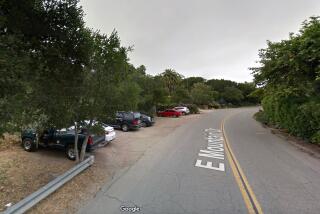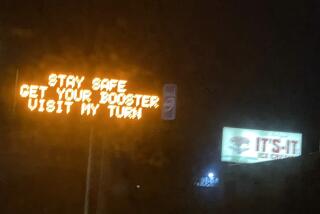Highway Eye Pollution
- Share via
Twenty years ago a Congress roused by the scenic blight affecting many of the nation’s major road systems enacted the Highway Beautification Act, which sought among other things to control advertising signs adjacent to major federal thoroughfares. Owners of these signs were to be compensated for their removal or relocation to allowed sites. Since then nearly 600,000 signs have been taken down, at a cost of close to $200 million. But hundreds of thousands of prohibited signs remain, many of them illegally erected in recent years, and the Transportation Department says that it doesn’t have the money to deal with the problem.
Neither, apparently, does it have much of a will to try, according to its own inspector general, who concludes that the department is “not aggressively pursuing the removal of illegal signs.”
A study by the General Accounting Office gives some indication of how bad things have become. In 1983 alone, according to the office, new signs were erected along roads and highways three times faster than old signs were taken down. In some cases billboard operators have been able to cut down trees and shrubs planted to beautify the highways so that their advertising signs would be more visible from the road. Sometimes, according to the Transportation Department, the removal of this foliage was even paid for with state funds.
Both the GAO and the inspector general reports agree that the Highway Beautification Act suffers from legal loopholes that allow some of its primary aims to be thwarted. But even with these weaknesses it is clear that much more could be done to make the highways more attractive and reverse the regression of recent years.
Billboards needn’t be forever, and illegally erected signs do not have to be tolerated out of complacency. It would cost the Transportation Department little to insist that the states meet their enforcement responsibilities. Similarly, a change in the law on compensation could be made that would require billboard owners to take down their signs after they had been given adequate time to amortize their costs. Roadside advertising signs exist because they are profitable. But in the end, of course, it is the traveler who pays for those signs in lost scenic value.
More to Read
Sign up for Essential California
The most important California stories and recommendations in your inbox every morning.
You may occasionally receive promotional content from the Los Angeles Times.













